The name of my science game is phenology and vegetation change in the warming arctic. We use some pretty cool technology to remote sense the overall health of plants in the tundra.
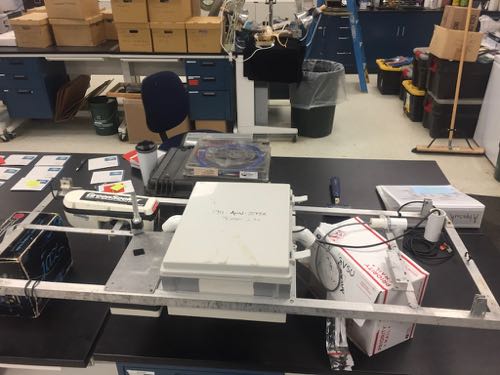 This is the MISP Tram that houses all the cool gear!
This is the MISP Tram that houses all the cool gear!
But What In The World Is Phenology?
In a nutshell, it's the study of the timing of growth and reproductive patterns in organisms. For example, the life cycle of a butterfly is egg, larva, pupa, adult. But what triggers that butterfly to move from one stage to another is what phenologists study. These triggers can be both biological (ex. hormone fluxes) and physical (ex. light changes, seasonal changes, food availability). Changes in environment (both natural and human influenced) can start triggering events to happen earlier or later that can have a cascade effect on the whole ecosystem.
Yesterday I went out with Dr. Noah Ashley and his team from Western Kentucky to trap snow buntings and longspurs to tag, measure, and in some cases draw blood for analysis.
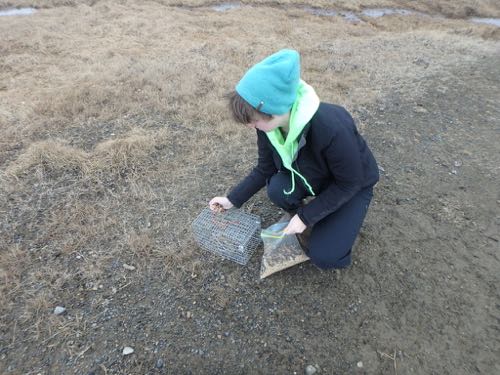 This is one of Dr. Ashley's high school students working on the project, Zoe, baiting a trap.
This is one of Dr. Ashley's high school students working on the project, Zoe, baiting a trap.
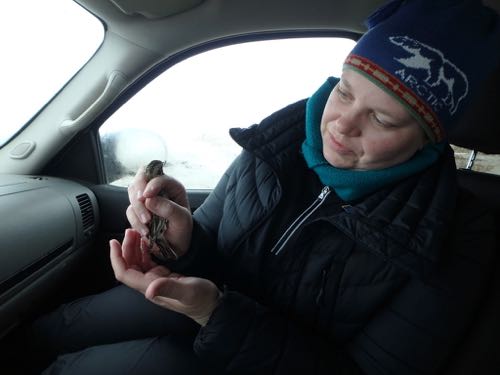 I'm holding a female longspur before releasing her.
I'm holding a female longspur before releasing her.
When these birds arrive from the lower 48, they build nests and begin to prepare for mating season. However, this year, the snow is melting off later than usual in Utqiagvik (Barrow) and competition for food and real estate is high. Finding nesting sites is a challenge. If the females lay their clutches at the "normal" time, their chicks will hatch before there is enough insect larvae to feed them due to the late start of insect reproduction. This is called a phenological mismatch.
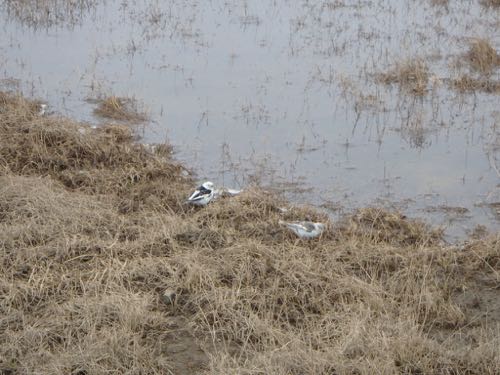 A male (black and white on the left) and a female (brown and white on the right) snow bunting off Cakeater Road.
A male (black and white on the left) and a female (brown and white on the right) snow bunting off Cakeater Road.
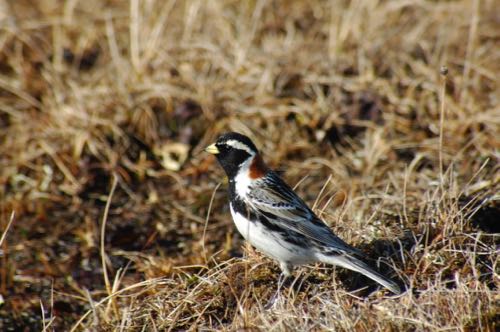 Male longspur. Photo by Elizabeth Eubanks (PolarTREC 2008), Courtesy of ARCUS.
Male longspur. Photo by Elizabeth Eubanks (PolarTREC 2008), Courtesy of ARCUS.
The Adventures of Flat Cat
On Friday, I got to see a polar bear on the sea ice! (From very far away, through a very powerful scope.) This was as close as Flat Cat was able to get. He toured the Inupiat Heritage Center in town.
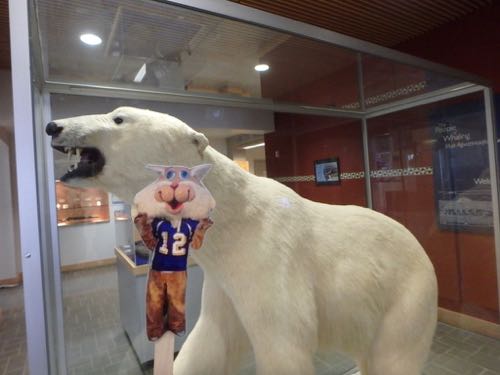 Flat Cat meets a polar bear!
Flat Cat meets a polar bear!

Comments
Add new comment